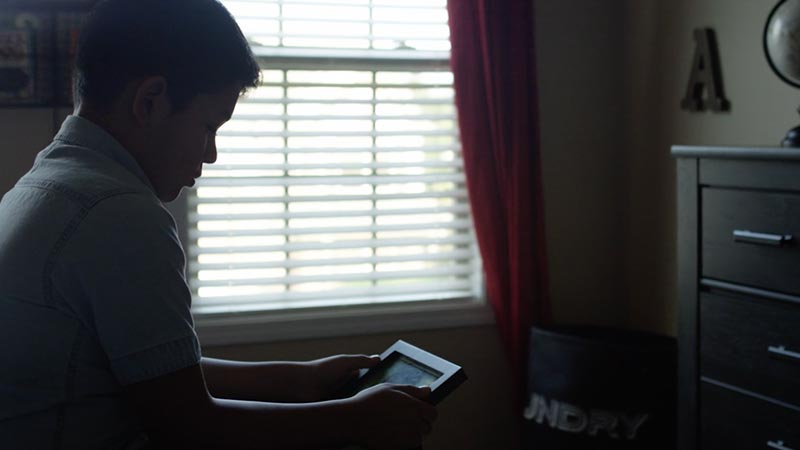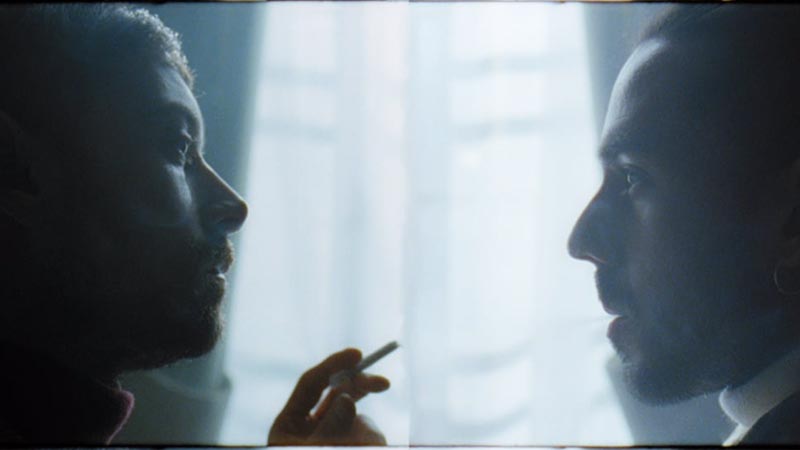Je Suis Responsable is the story of a woman visiting Planet Earth. The film takes its title from a monologue it quotes and homages. In Godard’s Vivre sa Vie, Anna Karina’s character tells a friend how she feels that “we are responsible for everything we do”. She goes on giving practical examples to prove her point. This iconic scene has alway made me wonder… What does it actually mean to say that we are responsible? On one hand it’s an easy concept to grasp at: whatever I do, think, or feel it’s my choice. But our instinct tells us there’s much more to it. As scientists warn us of the irrevocable damage Global Warming will have on society, preserving life on this planet has become the defining challenge of our time.

Can you tell us what inspired you to bring this story to life?
As soon as we decided to make this film, everything started happening at once. It was almost as if there was a script we were unconsciously acting upon. I think that what moved us into action was the urgency to translate the global derealisation brought about by the pandemic into a form of art. Coronavirus has shown us how fragile we are and how easily things can fall apart: we can’t help but feel this is a wake up call. As we continue to live through this crisis with an awareness of our own fragility and as scientists warn us of the irrevocable damage Global Warming will have on society, preserving life on this planet has become the defining challenge of our time.

Branded films are always a little tricky, but it seems like you had some creative liberty in this one. What kind of directives did you have from À forma?
Antonio and Daniele (the designers) have a very broad experience in the fashion industry. They understand well how what ultimately matters in fashion is the universe the brand creates. Everything’s at the service of an image; even the clothing at times, though they certainly remain the main vehicle of the designers’ creation.
Antonio and I have known each other for a very long time. Before Je Suis Responsable we had worked successfully on two films for his previous brand ( MONO-Y and Not(e) for a Dreamer). We’ve always thought very highly of each other, and have developed an attitude toward working together based on trust and creative freedom. Back in November 2020 Antonio and Daniele had just started producing the first collection of their new brand, À forma. I was prepping a music video at the time and I asked them to invest some money so that I could hold on to the camera and the lenses for one additional day. They accepted and we went on to shoot Je Suis Responsable. I remember Antonio and Daniele laughing at me when I told them that I was writing a script; I hadn’t seen a single piece of clothing, and there hadn’t been much discussion over what the film was supposed to communicate, yet. All I knew was that À forma had made sustainability its core value.
So, first and foremost Je Suis Responsable stands for Antono and Daniele’s statement: to produce responsibly. Nonetheless, the film takes its title from a monologue it quotes and homages. In Godard’s Vivre sa Vie, Anna Karina’s character tells a friend how she feels that “we are responsible for everything we do”. She goes on giving practical examples to prove her point. This iconic scene has alway made me wonder… What does it actually mean to say that we are responsible? On one hand it’s an easy concept to grasp at: whatever I do, think, or feel it’s my choice. But our instinct tells us there’s much more to it.

The narrative at its core is very human, with a science fiction overlay. What was your vision process in keeping the visuals grounded – and not caving into the science fiction genre?
I’ve always been fond of psychological science fiction; it’s one of the best means available to us to investigate our existence.
Even if the creative process behind this film was quite chaotic, I had since the beginning a very clear idea of how I was going to edit it. Visuals, music and sound design play a very important role in defining the tone and genre of this piece, but I believe what really qualifies it as science-fiction is primarily the protagonist’s nature. We don’t know if she’s human, but the questions she poses strongly resonate with us.
As humans, we’re always confronted with our finitude and impermanence. Artifice is immaterial; things fade, they lose their form and function. By contrast, nature always continues. It’s the most powerful force we know, and the only trace of destiny we can collectively experience.
How to convey such a high concept, and with – alas – very little budget available to us?
I started scouting locations with close to no clue to what the film was going to be. But I was naively confident, and absolutely lucky, for the locations we found were inherently narrative. Every setting is a reminder of the power of nature, and of the fact that, given enough time, nature finds its way through what humans have neglected.
Even with the main sets in place, the script was still quite random and didn’t have a strong enough narrative. Things changed after the first conversation I had with Désirée (the model). She told me about a dream she had the night before, and I found it so inspiring that I decided to structure the scenes starting from her discontinuous, emotionally dense account.
All the pieces had finally come together, and there was no need to force the elements any further. The settings, the storyline and the aesthetics all contributed to the same message: it doesn’t matter if this life is a dream that will end with the blink of an eye, until we’re here we’re responsible for our actions.
How did you apply À forma’s particularities to the film?
À forma, the brand, bases its designs on contrasts. Combining opposites represents the lifestyle of the designers. They believe in the adaptability of form. They structure their work up to the smallest detail, with the aim of seeing the unexpected emerge. They put absolute attention in the selection of the fabrics of their garments, then play with accessories to create breaking points.
To mirror their approach, the cinematography of this film is purposely a mix of very refined, and dirty images. Like for the designers, finding the breaking point of the images became for us a means to further expand their reality.



